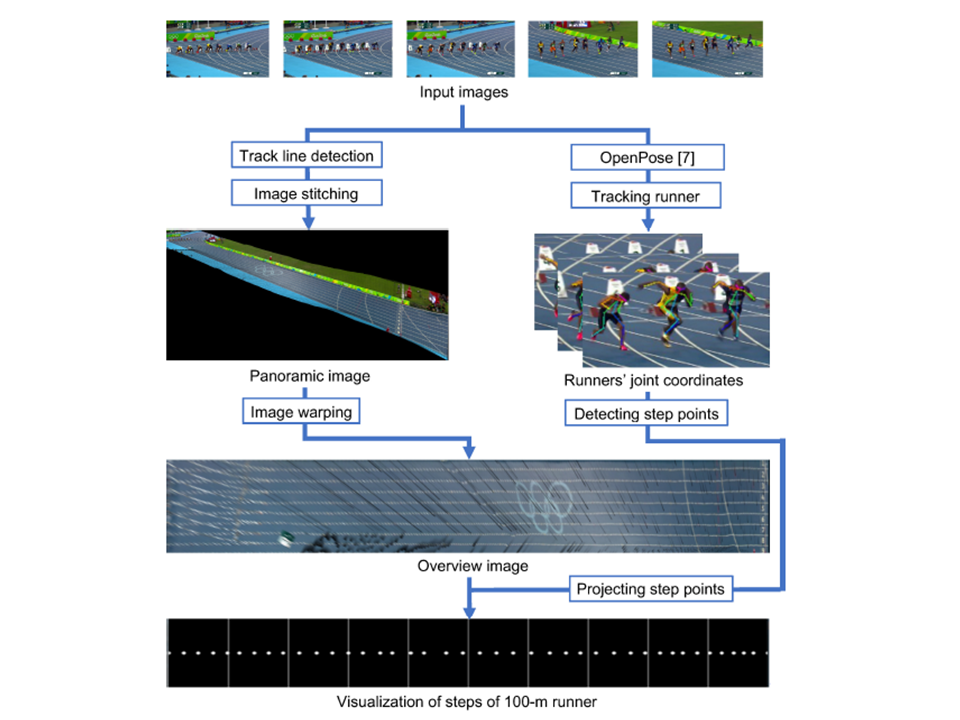100m走の動画を用いた陸上選手の自動接地判定
Estimating A Runner's Stride Length and Frequency from A Race Video by Using Ground Stitcing
八木賢太郎,長谷川邦洋,杉浦裕太,斎藤英雄
Kentaro Yagi, Kunihiro Hasegawa, Yuta Sugiura and Hideo Saito
[Reference /引用はこちら]
Kentaro Yagi, Kunihiro Hasegawa, Yuta Sugiura, Hideo Saito. Estimation of Runners’ Number of Steps, Stride Length and Speed Transition from Video of a 100-Meter Race. In Proceedings of the 1st International Workshop on Multimedia Content Analysis in Sports (MMSports’18), ACM, 87-95, October 26, 2018. DOI=[DOI]
本研究では陸上競技種目の一つである100m走のレース映像から選手の歩数,歩幅,速度推移を推定する手法を提案する.提案手法は既存の計測手法のように複数台のセンサやカメラを必要とせず,また既に終了した過去のレースに対しても選手の走行解析を行うことができる.まず各フレームにおいて選手が何m地点にいるかを計測するためにトラックの直線情報を用いて100mトラック全体のパノラマ画像を生成する.その後選手の足関節位置の推移からどのフレームで選手が接地したか判定を行い歩数,歩幅を決定する.実験では世界陸上男子100mのレース映像に対して本手法を適用し,既存の計測手法との比較を行なった.
The purpose of this study is sensing movements of 100-m runners from video that is publicly available, for example, Internet broadcasts. Normally, information that can be obtained from a video is limited to the number of steps and average stride length. However, our proposed method makes it possible to measure not only this information, but also time-scale information like every stride length and speed transition from the same input. Our proposed method can be divided into three steps. First, we generate a panoramic image of the 100-m track. By doing this, we can estimate where the runners are running in a frame at the 100-meter scale. Second, we detect whether the runner steps in the frame. For this process, we utilize the detected track lines and leg joint positions of runners. Finally, we project every steps to the overview image of the 100-m track to estimate the stride length at the 100-m scale. In the experiment part, we apply our method to various race videos. We evaluate the accuracy of our method via comparison with the data measure dusing typical methods. In addition, we evaluate the accuracy of estimation of the number of steps and show visualized runners’steps and speed transitions.
